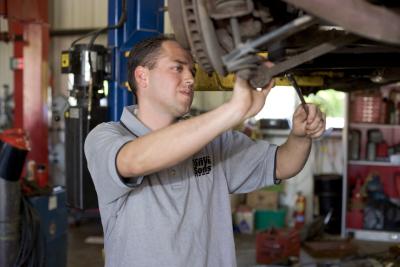
A stabilizer bar is part of an automobile’s suspension. It is also called a sway bar, roll bar, anti-sway bar or anti-roll bar.
A stabilizer bar is usually constructed out of a U-shaped piece of steel that connects opposite wheels together. The steel runs through short lever arms linked by a torsion spring.
The first stabilizer bar patent was awarded to SLC Coleman of Fredericton, New Brunswick on April 22, 1919. In the mid 1930s, stabilizer bars began appearing in new Oldsmobile automobiles. Since that time, all vehicles incorporate stabilizer bars in their suspension systems.
The bar is designed to remain flat when the wheels are moving together in the same direction and to twist when the wheels are in a turn.
One function of a stabilizer bar is to reduce body lean. The other function is to tune the handling balance of the car. Understeer or oversteer of an automobile can be adjusted by the stabilizer bar.
If the stabilizer bar is not functioning correctly, the automobile can feel extremely rigid like running into a brick wall, or slide around with no control whatsoever. The design itself of a stabilizer bar can force jarring or a waddling sensation on rough or broken pavement.